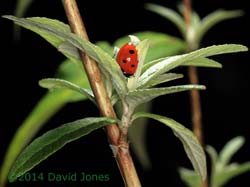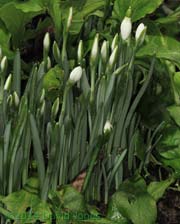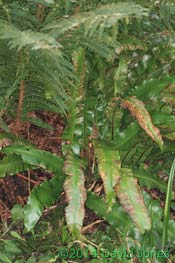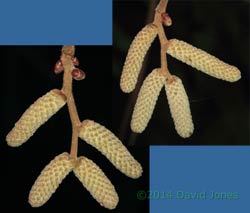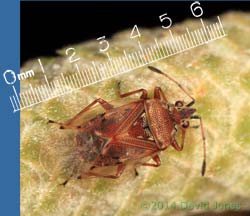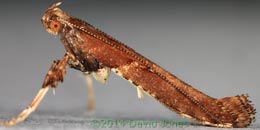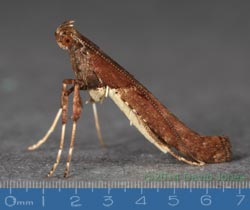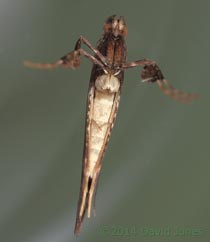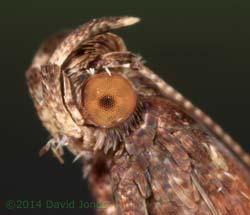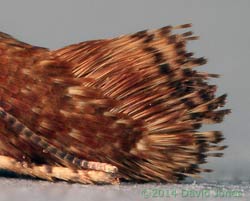Go to the last entry on this page .....Go to previous entry
20 January - Perhaps it seems appropriate that I should decide to drag mybitoftheplanet out of its short hibernation on the day that the Rosetta spacecraft woke itself up and sent a simple carrier wave signal back to Earth to announce that it was still in business after some 31 months asleep in the depths of the Solar System. If all goes well, Rosetta should provide some exciting times later in the year as it first catches up with the Comet 67P/Churyumov-Gerasimenko in August, then attempts to deploy a lander on the comet's surface in November, and then escorts the comet as it makes its closest approach to the sun in August 2015. It is an amazing mission, made all the more impressive when you remember that the technology on board Rosetta was designed the best part of twenty years ago. And as for the effort that went into calculating its trajectory since launch in 2004 - incredible! Anyway, back to the mundane, or at least our sad, soggy and neglected garden. The end of 2013 and the start of this year saw what must be the wettest period that I can remember. Yesterday, with its unbroken blue skies was probably the first day we've had without any rain at all for the last month or so. That, combined with my failure to clear away long dead plant growth left the place looking dreadful. Today, while our grandson was asleep I headed out to take a look at what needs to be done and actually managed to do some clearing. The amount lush growth seen reflects the lack of low temperatures so far this winter - so far I have seen a frost on just a few mornings. While the Snowdrops are still wrapped tightly on their buds, Red Campion flowers can be seen in a few places, having continued to flower right through since last summer. Last year was our worst year for frogs since my diaries began, with low numbers of adults returning to the pond. I suspect the main cause of this was the new fence my neighbour had installed. I discussed the problem with him today and he has given me to go ahead to adjust a couple of the panels to once again provide access at ground level between our gardens. This will be a simple job that I hope to have done by the end of the week. Our grandson is already impatient 'to see the frogs'! I should end by saying that like Rosetta I'm going to be taking a little time to wake from my inactivity, so it will be at least a few days before the 2014 diary is underway with all links etc sorted out!
21 January - A couple of things that I forgot to mention yesterday - Back in October/November I wrote about the pair of Jays that collected acorns from the garden on a regular basis. They continue to visit (I watched them yesterday), but with all the acorns gone they are grateful for the peanuts that I've been putting out for them. So far this winter I have seen none of the usual seasonal, feathered visitors, apart from a trio of Fieldfares which I spotted on a neighbour's roof a week or so before Christmas. Disappointingly, I didn't see any of them venture into our garden before they disappeared again. While that was a rather early sighting we are now in the middle of the 'Fieldfare season' so my fingers are crossed that they do visit us soon.
25 January - Today has been a good example of the mild start that we are having to 2014. The day started with a low of 8C that gave way to a high of 11C by noon, that temperature being maintained for most of the afternoon. After a slightly misty start it remained dry all day until the late afternoon when dark clouds rolled in from the west and the breeze picked up. That was a prelude to a really squally period around 5pm when the breeze got up over 20mph and for a short time the gusts must have been well over 40mph. Once that had passed us by the sky cleared and tonight would be a good one for stargazing.... With the prospect of Sunday being wet I did a bit more pruning out in the garden (The target was to fill two large bags for collection by our local council on Monday morning!).
There was little chance of missing this 7-spot Ladybird with its head down next to a bud - a reminder of an insect group that was in short supply last summer. That plant was spared the secateurs!
In my first entry I mentioned the Snowdrops and the Red Campions. Well, as usual there are a few Snowdrop flower buds, like these, that are well ahead of the rest, and many others have only just started appearing above the soil.
On the other hand, there are quite a few very straggly Red Campion plants continuing to grow after the 2013 season, and at lunchtime I counted a dozen flowers open. In addition there is plenty of evidence of young vegetative growth, something that I will need to control later before they take over the garden completely!
Also thriving rather than lying dormant are the most of the ferns in the garden, with masses of healthy looking fronds.
Last Autumn I mentioned that male catkins had developed on one of the trees for the first time since they were planted. There are just two almost identical clusters of what are for the moment tightly closed catkins measuring between 17 - 22mm in length. By the time they open in the Spring they could be nearer to 8cm in length. At that time I will be watching closely for the appearance of any very small, red coloured female flowers.
Although I didn't photograph any today, the Himalayan Birch is also decorated with male catkins, although in that case there must be hundreds of them.
Just after dusk when I went down the garden to measure the lengths of the Hazel catkins I found this active Birch Catkin Bug (Kleidocerys resedae) that hadn't been present when I photographed the catkins earlier in the day. There are always lots of them on the Birch catkins, so it will be interesting to see if they become frequent visitors to the Hazel too.
30 January - A very dull, somewhat murky day on which we saw no rain but learnt that in this part of the country we have experienced the wettest January for a hundred years (what a surprise!). By Tuesday (the 28th) we had already had twice the January average, and tomorrow the forecast is for heavy rain to end the day and the month. And it's getting colder, with a high of just 5C today and the national forecasts mentioning snow more and more. Bird activity is still at a very low level in the garden. Today I saw just one Goldfinch in addition to our usual Blackbirds (1 male, 1 female), House sparrows (>12), Starlings (3), Robin (1), Collared doves (2), Wood Pigeons and 1 Jay. Yesterday there was a brief visit by a pair of feral pigeons, which is very unusual indeed. On Tuesday our grandson had his best yet viewing of a Jay which stayed close for a couple of minutes. A month or so ago I bought an old pair of Bakelite opera glasses. These fit comfortably into the little one's hands and he uses them whenever he watches the birds at the feeders. In reality they magnify the view very little, but they are great as 'first binoculars'. He also enjoys turning them around to see how everything and everyone becomes smaller! Yesterday morning as I was strapping him into his car seat for the trip to nursery he caught an all too brief sighting of a fox as it ambled down our road at around 8am. I've heard one in the garden several times over the last few nights, but this was my first daytime sighting for quite a while.
I've recorded just one animal on camera since the last entry, this tiny micromoth which I believe is an Autumn generation adult of the species Caloptilia semifacia, measuring approximately 6.4mm in length. It was found indoors on Sunday (26th).
It is regarded as a 'local' species nationally, although it is common in Hampshire. Autumn generation hibernates as adults. Its larvae normally feed on Field Maple and Sycamore, but adults have been found on Ivy blossom - perhaps a reason to visit our garden? Now that I have photographed it I'll hide the moth in a sheltered spot at the bottom of the garden. The species belongs to the same family (Gracillariidae) as the Horse-chestnut Leaf Miner which has proved itself to be a pest since colonising the UK in recent times.
In this second image the moth has adopted a more upright stance which exposes the contrast between its upper and lower surfaces.
In this photograph, taken through thin glass, you can see that difference more clearly. While the upper body is covered mainly in smooth, chocolate brown scales, the abdomen is a creamy white colour, as the pair of bulbous structures that I believe to be the coxae of the hind legs (a coxa joins the leg to the body - in effect providing a hip joint) - if I'm wrong please let me know as I do not intend to dissect the moth!
A fascinating feature of the moth is the star-like artifact seen in photographs its eyes. I've not come across this before. It's also curious the way the insect's labial palps curve up and over the head, giving the appearance of a pair of horns, while its long, slender antennae are held tightly against the body.
In that image you can also see a small amount of metallic iridescence, around the eye(s), the back of the thorax and down the front of the moth where the scales do not have the rich brown colouring seen on the wings.
In this photograph of the rear of the moth you can see how the tip of the antenna reaches as far back as the end of the hind leg. It also shows the transition from small, smooth scales of much of the body surface to the long, brush-like scales of the trailing edges of the rear wings.
Click on images to see larger version
|
|
